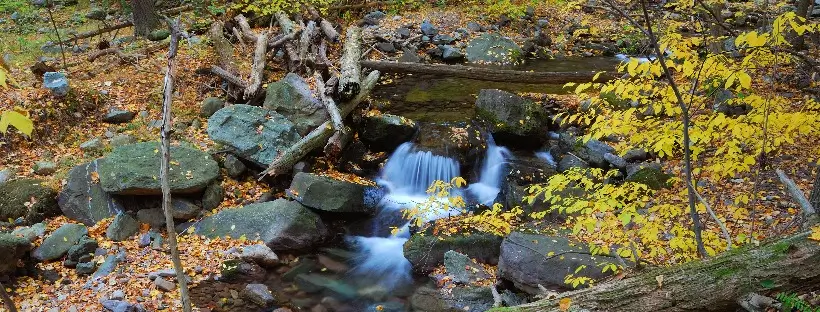Connect with Nature: 5 Simple Nature Meditation Techniques

The practice of nature meditation is rooted in ancient wisdom, recognized across various cultures for its profound ability to heal, restore, and connect us to the core of our existence. Scientific research and historical texts converge on the conclusion that engaging with the natural world through meditation is not merely a retreat from modernity but a return to our fundamental human needs.
This article explores five simple, yet powerful, nature meditation techniques that harness the intrinsic therapeutic properties of the outdoors. From the Japanese practice of Shinrin-yoku or forest bathing, which emphasizes immersive sensory experiences in woodland areas, to the mindfulness of walking in nature, these methods are designed to foster a deep-seated sense of calm, clarity, and interconnectedness.
By integrating these practices into your routine, you begin a journey that not only enhances personal growth but also cultivates a profound appreciation for the environment that sustains us.
What Is Nature Meditation?
Nature meditation is a practice that involves immersing oneself in the natural environment to cultivate mindfulness, serenity, and a deeper connection with the external world. This form of meditation leverages the calming effects of nature to enhance mental, emotional, and spiritual well-being. It can be performed in various settings such as forests, parks, gardens, or near bodies of water, utilizing the sights, sounds, and smells of the environment to anchor the mind in the present moment. The practice encourages participants to observe natural elements without judgment, fostering a sense of peace and unity with the environment. By directing attention to the natural world, individuals can reduce stress, improve mood, and gain insights into their inner experiences and the interconnectedness of all living things.
1. Forest Bathing (Shinrin-Yoku)

Forest Bathing, or Shinrin-Yoku, is a cornerstone of Japanese wellness, rooted in the tradition of immersing oneself in the forest atmosphere. This practice is not just a leisurely walk in the woods but a deliberate form of therapy that involves engaging all five senses to absorb the forest’s essence.
Scientific studies validate its health benefits, highlighting reductions in stress hormone levels, improvements in mood and sleep, and even enhanced immune system functioning. The act of forest bathing encourages a mindful presence that bridges the gap between humanity and the natural world, fostering an unparalleled sense of relaxation and rejuvenation.
Beyond its immediate calming effects, forest bathing has been linked to long-term health benefits, including lowered blood pressure, reduced risk of heart disease, and improved concentration and memory. Engaging with the forest in this way also deepens our relationship with nature, encouraging a stewardship that is essential for environmental conservation. It’s a practice that not only heals the person but also fosters a healing respect towards the environment.
2. Tree Meditation

Tree Meditation involves meditating in the presence of trees, drawing on their ancient wisdom and energy. This technique might include sitting near a tree, touching its bark, and observing its movements to deepen your connection with nature. Trees embody strength and resilience, offering lessons in rootedness and life’s continuous cycle.
This practice not only grounds us but also enhances our feeling of stability and connection to the earth. It fosters a reciprocal relationship, where we can draw on the serene presence of trees while offering them our focused attention. Through Tree Meditation, we’re reminded of our deep interconnectedness with the natural world, gaining a unique perspective on our personal challenges and our place within the environment.
Tree Meditation allows us to engage in a quiet dialogue with nature, encouraging mindfulness and a sense of peace. By focusing on the presence of a tree, we are invited to slow down and observe life’s simplicity, fostering a tranquil mind and a rejuvenated spirit. This meditative form deepens our awareness of the natural cycles, promoting a profound appreciation for the beauty and wisdom of the natural world around us.
3. Mindful Walking in Nature

Mindful Walking in Nature transcends the simple act of walking, transforming it into a meditative journey that promotes deep connection with the environment. This technique emphasizes the conscious observation of each step, the breath, and the surrounding natural beauty, facilitating a profound engagement with the present moment.
By focusing on the sensations of walking and the myriad details of the natural world, practitioners can cultivate a heightened state of awareness and inner peace. This practice serves as a powerful antidote to the distractions and stresses of modern life, grounding individuals in the here and now. Mindful walking in nature can be particularly beneficial for those who find seated meditation challenging, offering a dynamic form of mindfulness that also encourages physical health.
Through this practice, walkers often report a sense of unity with nature, an increase in creativity, and an overall enhancement of well-being. It is a testament to the idea that mindfulness does not require stillness; movement through nature can be just as profound.
4. Nature Sounds Meditation

Nature Sounds Meditation involves focusing on the auditory landscape of the natural world, whether it be the rustling of leaves, the gentle flow of a stream, or the chirping of birds. This practice encourages a deep listening that transcends mere hearing, fostering a state of relaxation and mindfulness.
By immersing oneself in the complexity and harmony of natural sounds, practitioners can achieve a sense of inner calm and a deeper connection to the present moment. The auditory experience becomes a gateway to mindfulness, helping to quiet the mind and soothe the spirit. Research has shown that natural sounds can significantly reduce stress and anxiety levels, enhance concentration, and improve mood.
This technique is particularly accessible, as even recorded nature sounds can facilitate meditation for those unable to venture outdoors. Nature Sounds Meditation not only promotes mental health but also cultivates an appreciation for the natural world’s beauty and diversity.
5. Sunrise or Sunset Meditation

Sunrise or Sunset Meditation involves aligning your meditation practice with the rising or setting of the sun, taking advantage of the profound beauty and serenity of these daily natural events. This practice encourages participants to observe the changing colors, light, and atmosphere, fostering a deep connection with the cyclical nature of life and the universe.
It’s a time to reflect on beginnings and endings, renewal and closure, offering a powerful metaphor for personal growth and transformation. Engaging in meditation during these times can enhance feelings of gratitude, peace, and connectedness, making it a unique and potent addition to your nature meditation practices.
This practice stands apart for its ability to harness the symbolic power of the sun as a source of light, energy, and inspiration, offering moments of profound clarity and tranquility. Sunrise or Sunset Meditation provides an opportunity to reset and align one’s internal clock with the natural rhythms of the earth, promoting a harmonious balance between body and mind.
Final thoughts

Incorporating nature meditation into our daily lives offers a bridge back to the natural world, fostering a profound connection that many of us yearn for in our fast-paced, technology-driven society. Practices like Forest Bathing, Mindful Walking in Nature, Nature Sounds Meditation, Tree Meditation, and Sunrise or Sunset Meditation each provide unique pathways to harness the restorative power of nature. They remind us of our intrinsic link to the environment and its cycles, offering peace, grounding, and a sense of renewal.
As we explore these techniques, we discover not only a deeper appreciation for the beauty and wisdom of the natural world but also insights into our own inner landscapes. This journey towards a more mindful and connected existence is not just beneficial for our personal well-being but also cultivates a greater sense of responsibility towards the preservation and respect of our natural surroundings.
Ultimately, nature meditation practices serve as a profound reminder of the simple yet profound joy of being alive and connected to the vast web of life. By dedicating time to connect with nature in these intentional ways, we open ourselves to experiences of awe, gratitude, and a deeper sense of belonging in the world.

















